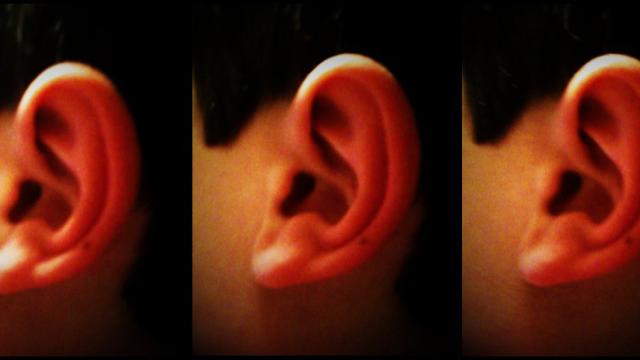One man experiences a voice projected in his brain “like a ghost”. A woman hears voices “shouting through her stomach” accompanied by “black, shadowy lips”; another hears her sister’s voice talking to her at night when she is in bed “like it is coming from a transmitter or a radio”.
These three people are deaf. They, along with 50 per cent of all deaf people with schizophrenia, ‘hear’ voices. It is hard to imagine an experience more strange, unsettling and counterintuitive. Research carried out recently has begun to unpick this contradictory psychological phenomenon, and may change the way that voice hallucinations are understood in hearing people too.
Trawl back through the research on voice hallucinations in deaf people and you will find plenty of case reports and studies to support their existence. Yet there is little consensus on what they actually consist of. So while plenty of psychologists supported the idea that deaf individuals — even those deaf from birth — could actually hear the voices, one researcher was unconvinced.
Joanna Atkinson is a researcher and a clinical psychologist based at University College London. She is also deaf. The idea that deaf people could really hear the voices that they hallucinated jarred with her day-to-day clinical experience. Whenever she asked a profoundly deaf person that question, she would receive the same incredulous response: “No, of course not — I am deaf.”
Yet when these same individuals were assessed by psychiatrists who could hear, using a sign language interpreter, they would describe their experience using hearing-related terms — loud, or low, or quiet — that suggested they were in fact hearing sound. What could they be experiencing?
Joanna believed that something had been lost in translation. Through her own observations and experience of deafness, she “realised they were borrowing the language of the hearing majority and psychiatric field, rather than meaning they could hear sound”. These subtle differences in language are what make this research so challenging: for a deaf person, someone could ‘shout’ at them by signing aggressively without making any sound. The inherent difficulty of explaining complex hallucinations and sensations is therefore compounded by the need to translate between different frames of reference.
Joanna and her colleagues recruited 27 deaf volunteers, each with a diagnosis of schizophrenia and a history of voice hallucination. They presented them with a series of cards, with each card describing a possible characteristic of their voice hallucination, covering the broadest possible range of attributes — from ‘voice sounds like a whisper’ to ‘voice comes through my nose’. The participants considered each statement and sorted the cards into piles of characteristics they had and hadn’t experienced.
The researchers found a diverse range of responses that closely corresponded to each individual’s own experience of language and their level of hearing loss. First things first: “Deaf people who had never heard did not experience true auditory hallucinations,” says Joanna. For this group, communication came via the mind’s eye: visual hallucinations of moving lips, or disembodied hands and arms making sign language movements.
But those who still had some hearing remaining, or had lost their hearing later in life, did experience true auditory hallucinations — from mumbling and muttering to just a vague sense of hearing something, which individuals often found hard to understand or describe. Joanna’s study even included one bilingual participant — a partially deaf woman who was also a native signer. Fittingly, she hallucinated a bilingual devil who would sometimes speak to her and sometimes communicate soundlessly using sign language.
A third, intriguing group comprised those who had reached adulthood without learning any formal language. These individuals might have learned sign language in later life, but with difficulty, having already passed the critical age for language acquisition. For them, hallucinations were more vague, described by Joanna as a “sense of being got at, being criticised or hostile facial expressions, lacking clear linguistic content”.
As well as matching closely with the person’s level of language experience, the researchers found that the type of hallucination also depended on the voice’s identity. If the subject believed the voice was their mother, who always communicated with them through speech, they would hallucinate her mouth. If later they hallucinated a friend from the deaf community, they would visualise their hands forming sign language.
Joanna’s research gives the most accurate account yet of what deaf voice hallucinations actually consist of, but many questions remain. All of the research so far has been carried out in a mental health context — it is unknown whether voice hallucinations occur occasionally in deaf people who are mentally well, as they do in hearing people. These findings could also have broader consequences in terms of how voice hallucinations are understood. Hearing people may well experience voice hallucinations through visual imagery as well as sound.
This poses a question to the psychiatric field: Are current ideas about voice hallucinations too narrow-minded? Currently, a psychiatrist’s clinical interviews focus on the auditory aspects of voice hearing, and are likely to be missing the diverse visual and physical hallucinations that can either accompany or replace what is actually heard. At best, this results in an incomplete picture of a patient’s symptoms; at worst, the patient feels that their experiences are not fully understood or taken seriously. Joanna believes that “it would destigmatise the range of perplexing phenomena that people experience if psychiatrists opened themselves up to a much greater range of experiences than is currently assumed in psychiatric interviews”. Perhaps, then, people who hear voices — both deaf and hearing — would be a step closer to understanding the strange sounds and signs inside their heads.
This article first appeared on Mosaic and is republished here under Creative Commons licence. Image by woodleywonderworksvia Creative Commons licence.
